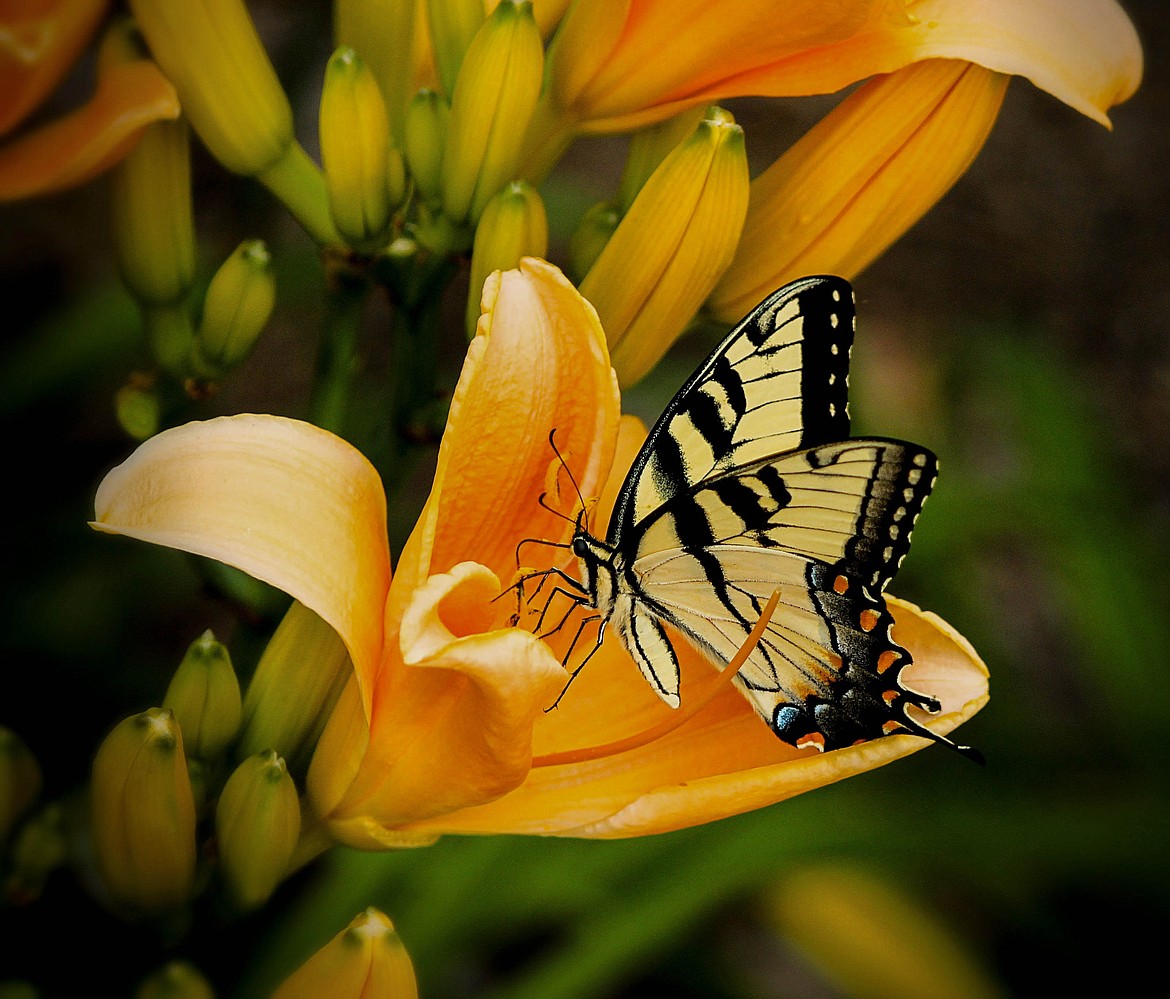Lilies offer hardy beauty to garden landscape
Many years ago, Amos Pettingill of White Flower Farm wrote: “There is no flower more graceful and lovely than the lily. The blooms of this hardy and long-lived genus are colorful and varied in form, and many are richly fragrant. Lilies are superb in a mixed border, magnificent interplanted with earlier bulbs and ferns, and quite unbelievably beautiful when scattered in large numbers across a meadow or woodland … of course they also offer glorious and long-lasting cut flowers.”
His words so inspired me that shortly after moving in 1990 to my current home, I put his words to the test. I began with the hardiest of all, day-lilies, which bloom in shrubby clumps with green strap-like foliage that stays pretty even as the trumpet flowers bloom and die each day. Back then, orange was pretty much the only choice, but later more and more colors became available; I planted many of them and after 32 years they are still going strong.
Superb as garden plants, beautiful as long-lasting cut flowers, and ideal container plants, lilies boast a hardiness that belies their fragile beauty. There are lilies for sun, lilies for shade, tall and/or short selections, and the fragrant varieties can perfume an entire neighborhood. Available in an incredible array of colors, lily species come in three basic types: upward facing, trumpet, and pendant.
The three-fold requirement of all of them is this: Heads in the sun, Feet in the shade, No wet feet! Light or dappled shade is appreciated by most of them, good drainage is essential, and good garden soil slightly on the acidic side (Hooray, that's what we've got!) with a high content of organic matter is ideal. Their drama is such that only one plant or a small grouping can be a garden showstopper. A great mass or swathe of them can be breathtaking and will serve you for decades. Lilies are available in colors to die for — solids of shining whites, gleaming golds, gentle pinks, glowing reds and corals, even green — some are “painted” for a two-tone effect; and the beauties like the now legendary Stargazer — and Trumpet/Oriental crosses with their regal beauty and fragrance offer a multitude of choices. The shapes too, are varied: from traditional trumpet to star, ruffled, morning glory, and gladiola-like petals, and often, colored stamens.
Daylilies may be planted in the spring, as can the great hybrids that bloom in clusters and last “forever” — the lilies for naturalizing. These can include Asiatic (hardiest) trumpets and trumpet/Oriental crosses, all offering incredible hardiness — so important for our soil and climate — plus a knock-out bonus: Bulbs planted this spring will bloom this coming summer! After time they can reach two feet tall, so consider placement. Front a green hedge with them, fill in soil pockets in the rock garden, make a swath through a planting of ferns or other green leaved ornamentals — or plant en masse for a grand show fronting an arbor, rose bush or entry-way. They’ll grow anywhere, preferring moist, friable fairly acidic soil, but do not like wet feet! Though they love the sun, they will tolerate dappled shade beautifully.
However, the individual beauties — as most bulbs, must be planted in the fall, since they need a cold, dormant period. So choose your spots and ready the sites, for in our short-season of gardening it’s not a long wait!
For all planting, prepare your soil to a depth of at least 12 inches, so as to cover bulbs with a good 8 inches of soil over them. Tall trumpet types need to be spaced 24 inches apart (yes, even for groupings), with shorter types, Asiatics, etc., 12 inches apart. After planting, water the bulbs in to settle the soil around them. In our cold winters, mulching is helpful, not so much to protect the bulbs as to prevent frost heaving the bulbs upward. Their deep planting is important. In the spring, as soon as shoots appear, feed with a balanced fertilizer or bulb food. Repeat as the product directs until buds form, and then stop. Simply keep the soil moist but not wet through the growing season.
Important: When the flowers have finished blooming, remove the blooms but leave the stems until the foliage has become brown. Only then can they be cut down. The stem stores the food for the bulb, and if you accidentally break a springtime stem, you will have no flowers on the plant that year. It follows that when you cut lilies for bouquets, leave as much of the stem as you can.
Leave bulbs undisturbed for years. Only when they become very overcrowded and flower production has declined, carefully lift, divide and replant. Otherwise, "Do not disturb." Like peonies and roses, lilies can grow happily in the same location for decades.
Lilies can make wonderful container plants, but need deep containers. Use regular potting soil and set the bulbs 6 inches or more deep. As soon as spring shoots appear, begin your fertilizer program, using liquid organic fertilizer. As before, do this only until buds appear, then stop feeding, but continue to keep containers moist. Asiatics and shorter hybrids make the best container plants.
As you see, different types of lilies bloom from late spring into fall, so you can have them gracing your garden throughout the growing season. Make your selections according to the information on height, bloom pattern, time of bloom and sun/shade preference, and be sure to work some of the fragrant hybrids into your plans. One white lily scented my house dramatically for a full week; who needs room spray?
It goes without saying that lilies are valuable butterfly (and other pollinators) beacons. A warning, however: deer love tender lily buds — but not the full flowers or their foliage — so if you are plagued by the pretty but pesky creatures (as I am), consider planting partners that deer generally ignore — Brunnera, Pulmoneria or even Lilies of the Valley come to mind as possibilities along with the afore-mentioned ferns.
After the third year of bloom (as per most all perennials) you may carefully dig up the bulbs, gently remove the scales, offsets and bulblets growing from them for re-planting elsewhere, and return the “mother” bulb to its site. If you did a grouped planting, this is the perfect time to separate. You may add a dash of bulb food if you wish, but don’t use soil enrichment — lilies do not do well in alkaline soil. As for the bulblets, plant them with an eye for their future showing, realizing it will take a bit longer for their small size. Often, containers work well for these, for later transplants into the ground.
Please don’t buy bags of bulbs (or any plants) at big box/chain stores: with so many furtive additives that are harmful to other plants, beneficial insects, birds and even the environment itself — it’s vital to keep the faith and protect our gardens and landscapes the way Nature intended — not Bayer or Roundup, et al.
Support our wonderful local/area garden nurseries for certainty of success!
Valle Novak writes the Country Chef and Weekend Gardener columns for the Daily Bee. She can be reached at bcdailybee@bonnercountydailybee.com or by phone at 208-265-4688 between the hours of 8 a.m. to 7 p.m.





